Michael Graves Design and Pottery Barn's New Collection Is Making Accessible Design Elegant — By Every Definition
Michael Graves Design's renowned "Design for All" ethos meets Pottery Barn’s knack for elevating the everyday, birthing a permanent furniture collection that is beautiful as it is functional.


The notion of making furniture safer, more comfortable, and easier to use seems like a no-brainer. After all, about 61 million adults live with a disability, and the overwhelming majority of US adults plan to age in place. Yet, how many homeware brands offer accessible collections? Inarguably, not enough.
That's changing for Pottery Barn, who has collaborated with Michael Graves Design (MGD) to launch a collection of inclusive furniture that’s as stylish as it is functional. MGD’s mission is simple: enhancement. Their designs are celebrated for accessibility — earning them the title of Most Accessible Design Brand — without ever sacrificing elegance. Partnering with Pottery Barn, a brand known for elevating the everyday living (and the amazing Pottery Barn sale), this collaboration is a match made in heaven.
But, taking this back to grammar school: what does “accessibility” really mean? It’s become quite the buzzword, so I asked MGD executives for clarity. According to MGD President, Donald Strum, Michael Graves Design strives for accessibility in all its forms: physical, cognitive, and financial. After all, what’s the point of creating beautifully inclusive items if no one can afford them?
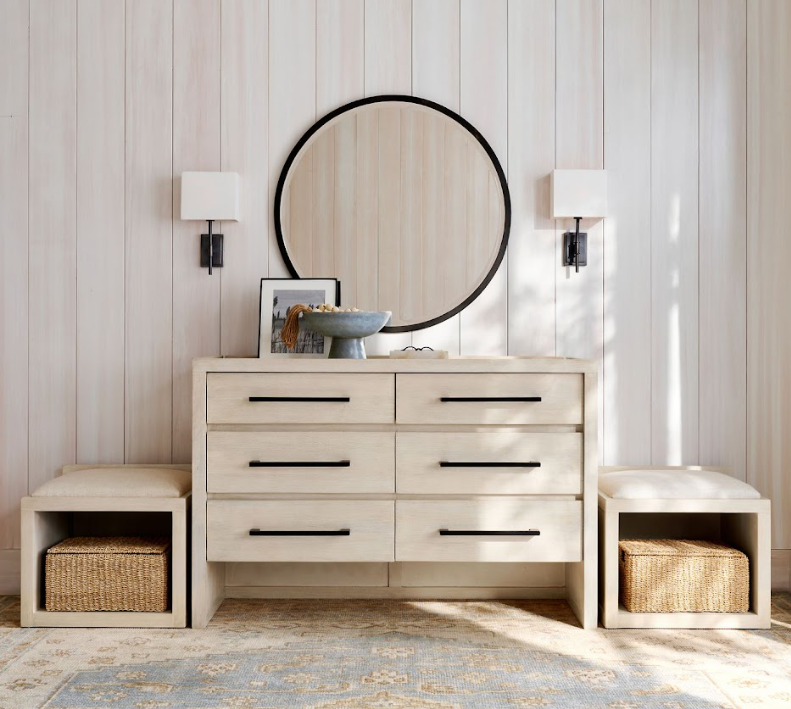
Think stunning materials, finishes, and silhouettes that also happen to include safer mobility touchpoints, enhanced seating options, adjustable lounge seating for ergonomic comfort, and integrated storage solutions.
Embracing MGD’s “Design for All” ethos, the Pottery Barn collection focuses on four essential furniture pieces: bed frames with integrated armrests, pull & roll side grips, and built-in benches; nightstands with raised edges, integrated power strips, and easy-access pulls; ADA-compliant dressers with easy-to-use drawer pulls and grab rails for safety; and armchairs with customizable foot risers and rear grab rails.
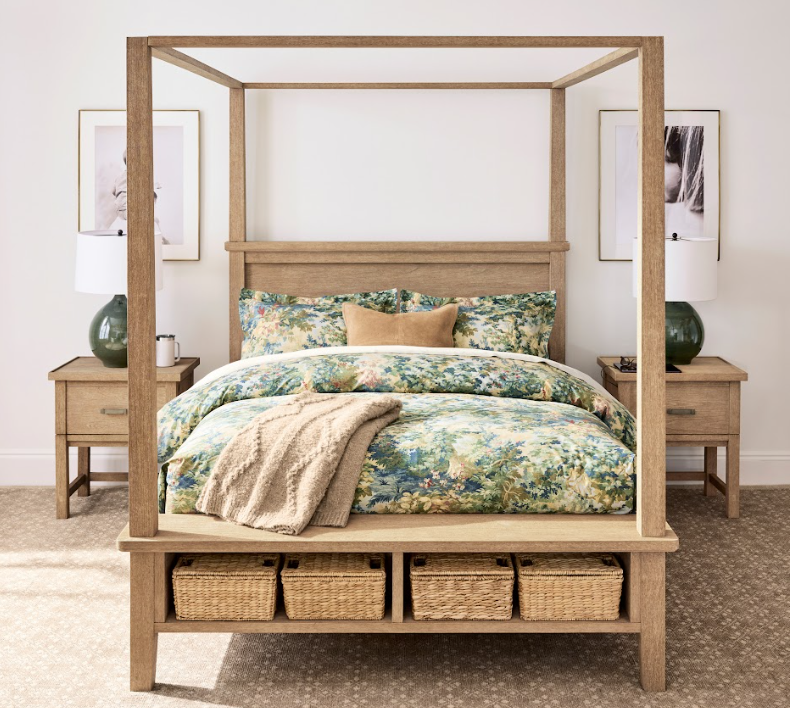
This collection, which extends Pottery Barn’s best-selling bedroom lines — Sausalito, Cayman, and Farmhouse — is incredibly versatile, ranging from chic and global to more minimalist styles. With a neutral color palette, it’s hard to imagine a home or aesthetic these pieces wouldn’t complement.
“With Michael Graves Design’s experience in accessible design, and Pottery Barn's strategic advantages related to quality, style, distribution and price for home furnishings, this collaboration leverages what each party does best in ways that neither brand could achieve on its own,” muses MGD Chief Design Officer, Rob Van Varick.
The partnership between Michael Graves Design and Pottery Barn is just the beginning — this collection is here to stay. We can now look forward to a future filled with elegant homewares that evolve with us, seamlessly blending style and accessibility to make everyday life a little more beautiful. The only question left is, as MGD Chief Executive Officer Ben Wintner puts it, is "What took so long?!?"
Explore the full collection at Pottery Barn.
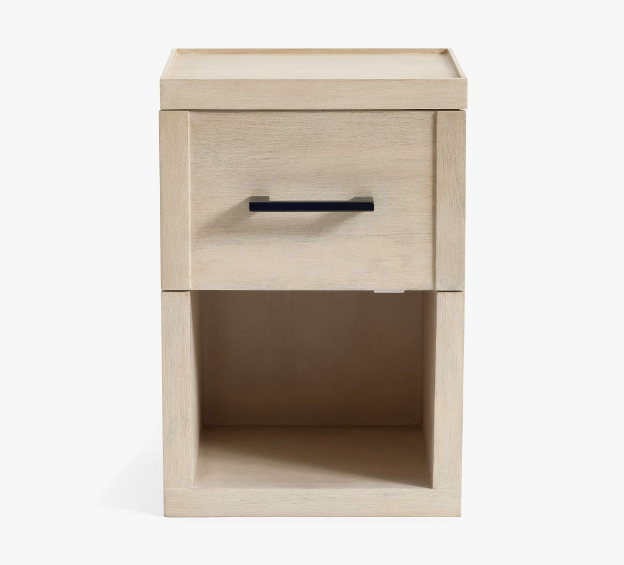
Price: $499
“If you are a CPAP user (or if you should be), the nightstands are essential,” says MGD President Donald Strum. “For so many people, the idea of leaving a medical device out on the nightstand is an impediment to using a CPAP, which provides essential healthcare and lifestyle advantages. Our nightstands are sized to accept most CPAP machines, have integrated power strips in the drawers to eliminate bending to power up a CPAP or a phone, and have pass-through cutouts so tubing for CPAP machines or power supplies for phones can be accessed with the drawer closed.” This one is in Pottery Barn’s beloved Cayman style, which looks sleek and beachy all at once. Consider adding a woven basket underneath for a touch of texture and added functionality.

Price: $2,699
I am completely, utterly, and totally obsessed with this canopy bed — I’ll take two! It feels regal but remains unpretentious, thanks to rustic, exposed grain. You can easily dress it up or down by adding a canopy covering or leaving it bare. The additional storage at the foot of the bed is a nice touch, offering an easy-to-access space for clothing, bedding, and everyday essentials. Pair with a rug underneath to further define this unique focal point.
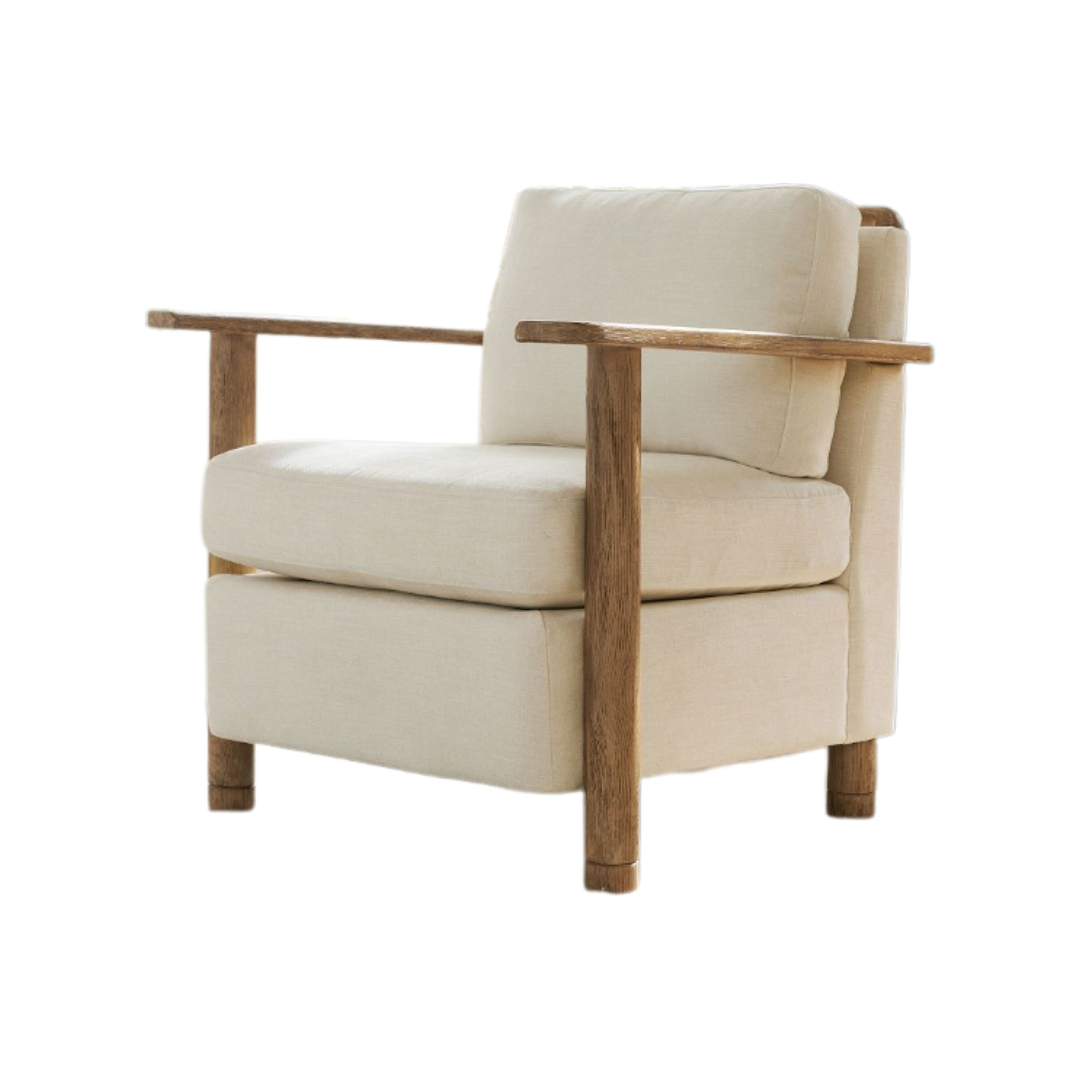
Price: $1,099
What makes the perfect chair? Normally, I’d say looks, but we all know it’s one that's so comfortable you don’t really want to leave. This chair meets both criteria, with the added bonus of functionality with its adjustable foot height. It’s a favorite of MGD President Donald Strum, who notes that at first glance, it’s simply a great-looking mixed-materials lounge chair. “But upon closer inspection, you realize that it is designed to make ingress and egress safer and more comfortable,” thanks to optimized foam density, seat height and depth, and armrests that encourage “nose over toes” positioning. It even has a rear grab rail that “provides a safe grip for balance and facilitates furniture surfing (a term we coined for walking in a room using the furniture as a balance aid).”
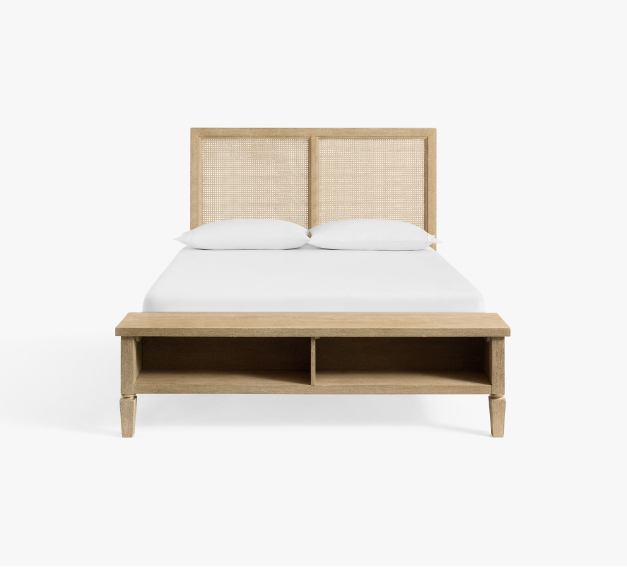
Price: $1,999
The breeziness of cane just makes you want to take a deep breath and relax, which is why it’s the perfect accent in this richly grained bed. Its classic molding and turned legs are elegant touches that feel slightly vintage but will never go out of style. The integrated armrests are perfectly placed to help with sitting and standing when getting in and out of bed, and the bench at the foot is great for saving space if you’re looking to open up your sleeping area.
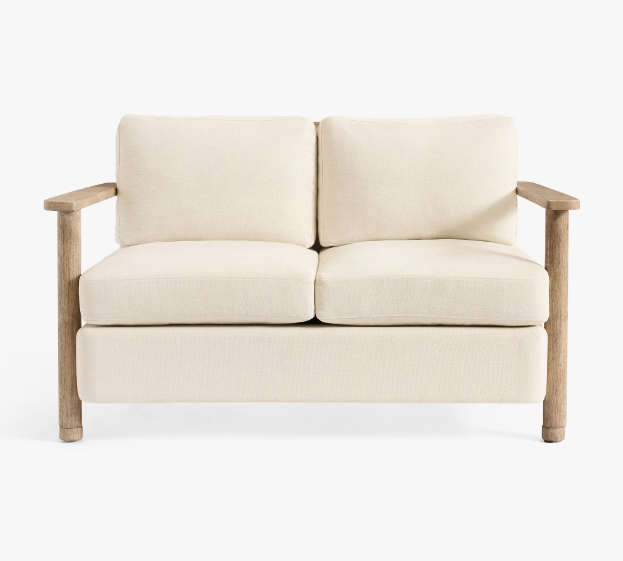
Price: $1,899
At 69” wide, the Bradford sofa is the perfect mid-size modern sofa. I love it in the ivory heathered tweed pictured, but the variety of upholsteries available, including luxe materials like boucle, chenille, and Everydayvelvet in a vast array of colors, is impressive. Its taller seats make it easier to get in and out of and, in my opinion, create a slightly more exaggerated silhouette that's chicer than usual. Not to mention the high-contrast armrests — who doesn’t love a little drama?
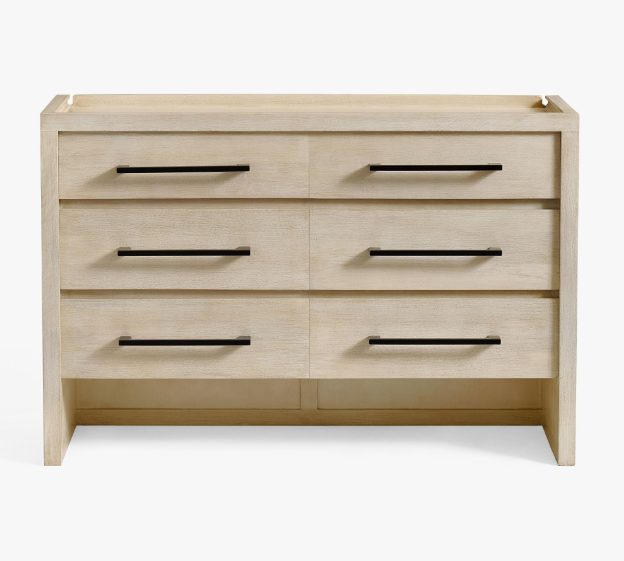
Price: $1,699
The Cayman dresser proves that modern and minimal need not be cold or boring with its gently warm wood. It’s a welcoming piece with tons of versatility: it’s branded as a dresser, but I’m convinced it would work in a living room area as well as a credenza. Notice the raised bottom drawer, which MGD Chief Design Officer Rob Van Varick explains “reduces bending and features 9” wheelchair friendly ground clearance, while creating space for bin storage.” Style it solo or add your favorite pretty little things on top, from lamps and jewelry boxes to vases of flowers and art.

Price: $2,199
This dresser is my favorite from the collection. It uniquely blends a traditional profile with sleek, elegant hardware, epitomizing timeless style. I’m partial to the seadrift wood, though it’s also available in a slightly darker Gray Wash. MGD Chief Design Officer Rob Van Varick highlights the integrated Grab Channels, which “stop small items from falling to the floor, preventing fall risk.” It looks best in rooms with ample light, and if you don’t have that, consider adding a mirror — trust me.
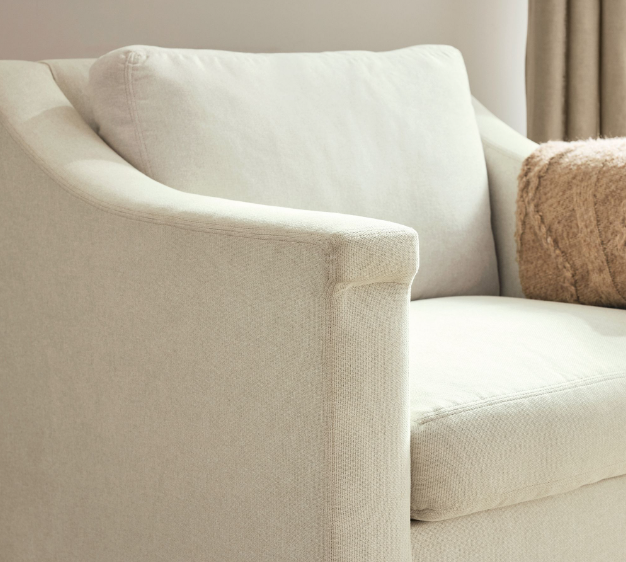
Price: $1,199
Everyone needs a good, substantial armchair. Done right, sitting in it feels like an extension of home: warm, cozy, and inviting. This chair is exactly that with added sophistication from its sloped design, providing the perfect nook to rest your forearm. Like most upholstered options in the collection, it’s available in a range of materials and colorways (I’m partial to the fern shade in Everydayvelvet — so luxe).
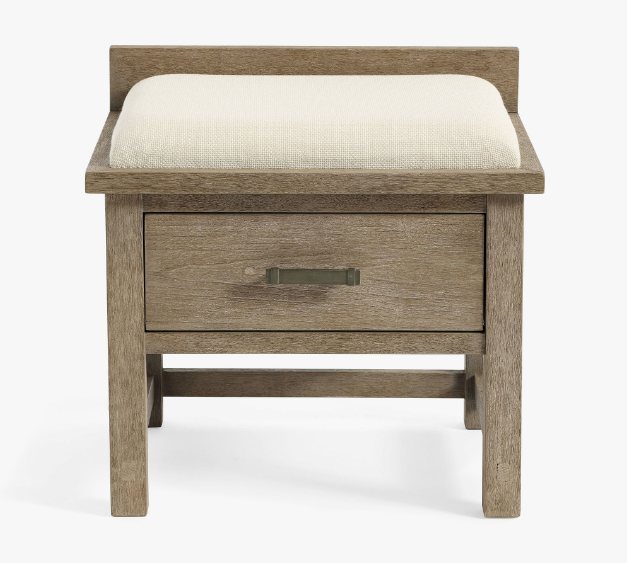
Price: $699
I’m absolutely loving this little dresser seat, which is a great space-saving option for small spaces, easily fitting against the wall or in a spare corner. It’s also perfect for foyers and entryways — places where you might not ordinarily have seating but could definitely use it for putting on or taking off shoes. The rustic wood finish lends an heirloom feel, while the sleek hardware keeps the design feeling very now.
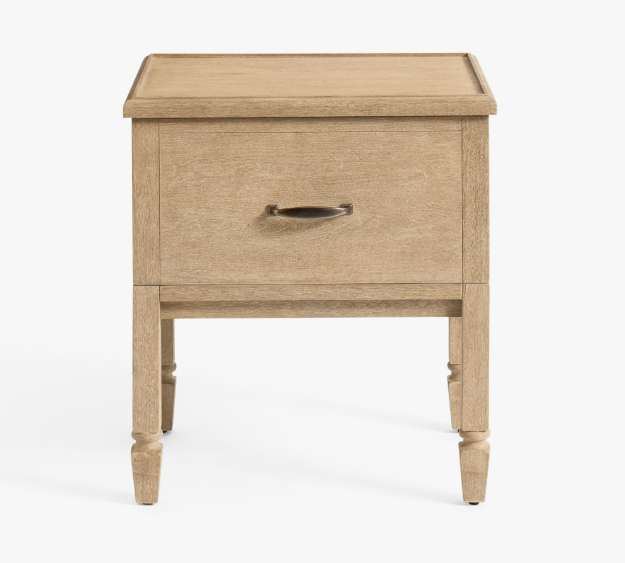
Price: $799
This nightstand is the epitome of classic charm with its refined turned legs and timeless molding. But don't be fooled — the integrated power strip assures us this is not your grandmother’s furniture (though we love you, Grandma!). It’s a functionally modern touch you won’t find on typical traditional pieces. If this is your style, I see little need to look anywhere else. Top it off with an extra tall table lamp to play with scale.
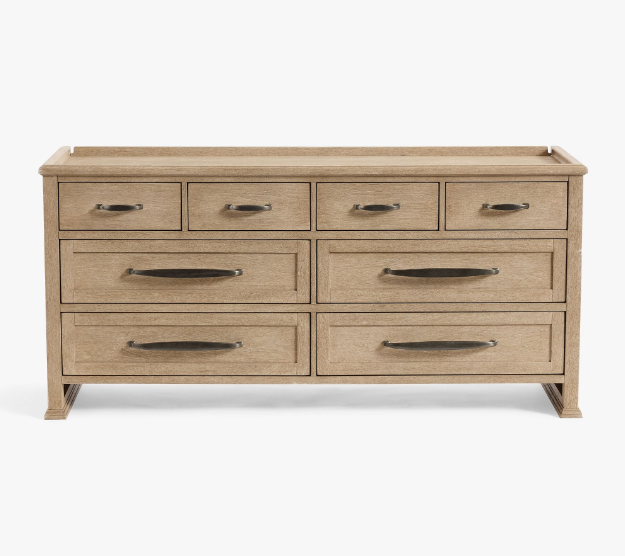
Price: $2,299
If, like me, you have more clothes than you probably need (and refuse to part with them), consider the Sausalito Cane Dresser. It boasts a whopping eight drawers in various sizes to meet all your wardrobe needs. Its intricate details make this one of the more stately furniture options in the collection. Most dressers fade into the background, but this one is an eye-catching, yet classic, focal point. Consider adding a dresser seat to the side for a petite seating solution to use as you get dressed.
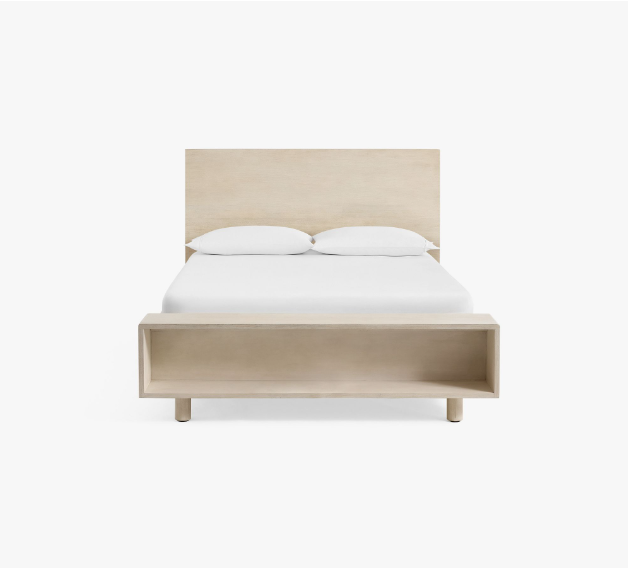
Price: $1,499
“The integrated armrests on all four bed designs help sitting, standing and repositioning in bed in such an intuitive way that people are going to wonder how we lived without armrests on our beds,” explains MGD CEO Ben Wintner. Plus, “The pull & roll side grip helps you reposition in bed and takes strain off your back when sitting up.'' It’s amazing that all this ingenuity is packed into such a seemingly simplistic and sleek silhouette, but that’s just a testament to good design.
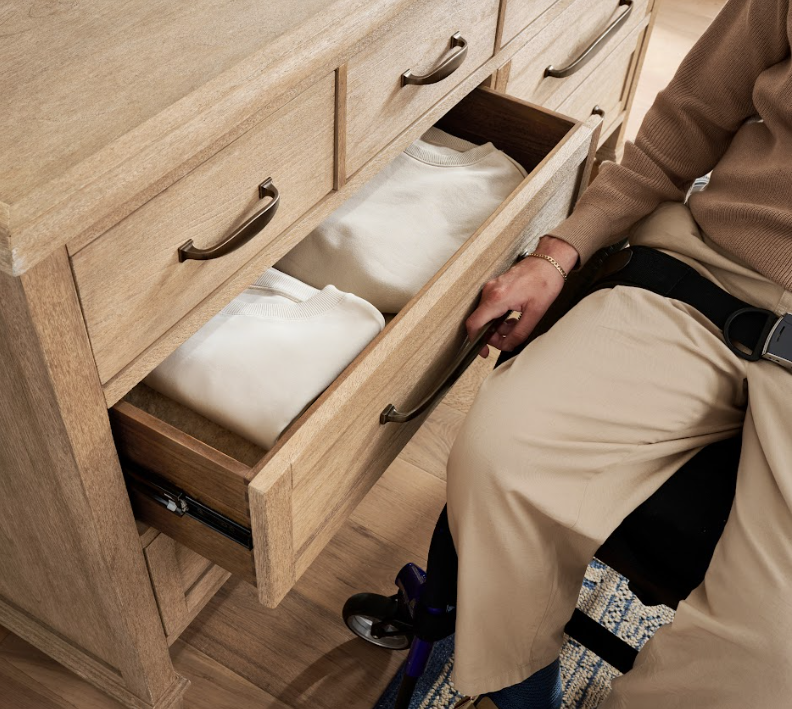
What is the Michael Graves Design for Pottery Barn testing process?
When it comes to creating accessible designs, testing is crucial. After all, the best insights come from those who actually use the products.
In 2003, when renowned architect and designer Michael Graves became paralyzed, he became the brand’s first real-life tester, providing invaluable feedback to refine and improve each product. Since then, the brand has, according to MGD executives, “engaged in hundreds upon hundreds of hours of ethnographic research,” working with older adults, people with disabilities, and their caregivers to observe and understand their daily lives.
Now, partnering with Pottery Barn, MGD has taken this rigorous process to new heights. They conducted Consumer Preference Testing involving older adults, people with permanent disabilities (like wheelchair users and those with Parkinson's), temporary disabilities (such as sports injuries or surgical recovery), and situational disabilities (like holding a baby or a laundry basket). These participants interacted with “works-like” prototypes, allowing the design team to observe, conduct A/B testing, and refine the final products based on real user feedback.
This collection isn’t just designed for customers — it’s designed with them.

Formerly covering fashion at L’Officiel USA, style maven Julia Demer brings her love of design to Livingetc’s world of interiors. As the title’s New York-based Style Editor, Julia's work reflects a sharp eye for detail and an innate passion for aesthetics. Her journey began with a strong foundation in design, honing her craft at renowned establishments like The Row and even establishing her own eponymous fashion brand. Julia’s design background is evident in the way she thoughtfully curates shopping edits, always maintaining a focus on emerging trends while preserving timeless sensibilities. For Julia, fashion and interiors go hand in hand, reflecting her lifelong commitment to perfecting the art of style.